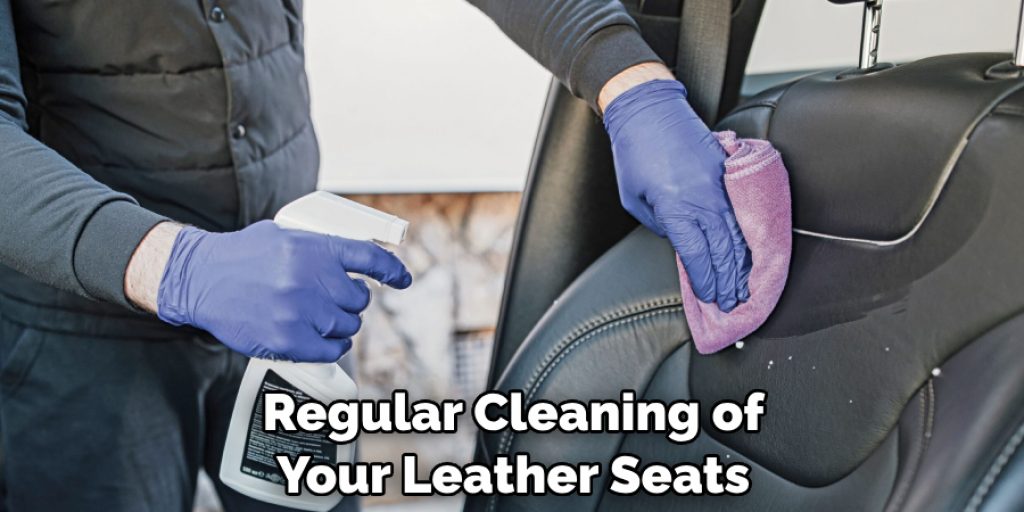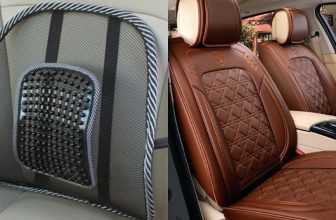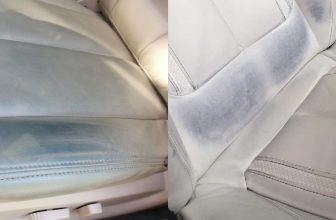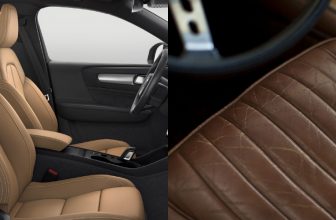How to Maintain Leather Seats in Car
Luxurious and timeless, leather seats can add an air of sophistication to any car’s interior. However, their elegance comes with a responsibility – proper maintenance. To ensure your car’s leather seats remain supple, attractive, and free from wear and tear, a consistent maintenance routine is essential.
From protecting against harmful UV rays to preventing stains and maintaining the leather’s natural oils, understanding the intricacies of leather care can prolong the lifespan of your seats while preserving their original beauty.

In this guide, we will delve into how to maintain leather seats in car. Whether you’re a proud owner seeking to keep your vehicle’s interior impeccable or a new leather-seat enthusiast, these expert tips will guide you through the steps to maintain that lustrous allure and ensure your leather seats remain a statement of elegance for years to come.
Importance of Maintaining Leather Seats in Car
Leather seats are a luxurious addition to any car. Not only do they offer a stylish look, but they also provide comfort and support for passengers riding in the backseat or driving. However, maintaining leather seats requires more than just wiping them down with a damp cloth every once in awhile; it is important to keep up with regular maintenance and cleaning to ensure that the leather stays soft, supple and beautiful.
Although leather seats may seem intimidating to care for, with the right products and a bit of knowledge, it can be easy to keep them looking like new!
The first step to maintaining leather seats in your car is ensuring that you protect them from damage. To do this, make sure that you clean any spills or dirt off the surface of the seat as soon as possible. Additionally, avoid letting food or drinks sit on the leather and always use a coasters or drink holders if necessary.
It is also important to condition your leather seats regularly. Conditioning provides nourishment that prevents cracking and drying of the material over time. Use a product specifically designed for leather seats– don’t use products intended for other types of upholstery. For best results, condition the leather every three to six months.
Understanding Leather Types and Finishes
When it comes to car leather seats, there are two main types of leather: finished and aniline. Finished leather is treated with a coating that gives it a glossy finish, making it easier to clean and care for. Aniline leather has a more natural look, but requires more maintenance as it is porous and can absorb dirt and oils from your clothing.

If you are not sure what type of leather your car seats have, it is important to determine this before cleaning. Depending on the type of leather, different cleaners and conditioning treatments may need to be used. To identify the type of leather, it is best to consult with a qualified technician. Although it is possible to purchase a leather care kit that contains everything you need, it is always best to start with a professional opinion.
No matter what type of leather your car seats have, regular cleaning and conditioning are key for keeping them looking great. Vacuuming regularly can help remove dirt and debris from the surface, while periodic treatments with a quality leather cleaner or conditioner can help to keep the leather soft and supple.
When selecting a cleaner or conditioner, make sure it is formulated for use on car seats and check the product reviews to ensure that it will not damage the material.
It’s also important to remember that prevention is key when it comes to maintaining leather seats in your car. Avoiding food and drink spills, keeping pets off the seats, and wiping away dirt and debris on a regular basis can help keep your leather looking like new for years to come. If you follow these simple steps, you can ensure that your car’s leather seats stay in top shape.
10 Steps How to Maintain Leather Seats in Car
Step 1: Regular Cleaning Routine
Establishing a regular cleaning routine is essential to maintain the pristine condition of your car’s leather seats. Start by removing loose dirt and debris with a soft brush or a vacuum cleaner equipped with a soft brush attachment. This prevents abrasive particles from causing scratches during the cleaning process.
Step 2: Choose the Right Cleaning Products
Selecting the appropriate cleaning products is crucial to avoid damaging the leather. Opt for pH-balanced, leather-specific cleaners that are free from harsh chemicals. Avoid using household cleaners or products containing alcohol, as they can strip the leather of its natural oils and lead to cracking.

Step 3: Perform a Spot Test
Before applying any cleaner to the entire seat, perform a spot test in an inconspicuous area to ensure the cleaner doesn’t discolor or damage the leather. This precaution is especially important if you’re using a new product or if your seats are a unique color.
Step 4: Gently Clean the Leather
Dampen a clean, soft cloth with the leather cleaner and wring it out to avoid excessive moisture. Wipe down the seats in a gentle, circular motion. Focus on one small section at a time to ensure thorough cleaning. As you clean, you’ll notice the dirt and grime lifting off the surface.
Step 5: Address Stains Promptly
If you encounter stains such as ink, food, or liquid spills, address them promptly. Blot the stain with a clean, damp cloth – avoid rubbing, as it can spread the stain. For stubborn stains, apply a small amount of leather cleaner to a cloth and gently rub the stain in a circular motion. Always follow up with a gentle overall cleaning to maintain uniformity.
Step 6: Conditioning the Leather
Conditioning is a crucial step to replenish the leather’s natural oils and prevent it from drying out and cracking. Choose a high-quality leather conditioner and apply a small amount to a clean cloth. Gently rub the conditioner onto the seats using circular motions. Allow the conditioner to penetrate the leather for the recommended time, then buff away any excess with a separate clean cloth.
Step 7: Protection from UV Rays
Direct sunlight and UV rays can cause leather to fade and become brittle over time. Park your car in shaded areas or use sunshades to protect your leather seats from prolonged sun exposure. Applying a UV protectant specifically designed for leather can also help safeguard against UV damage.
Step 8: Preventing Moisture Damage
Excessive moisture can lead to mold and mildew growth on leather seats. Avoid leaving your car’s windows open during rain or snow, and ensure that your car’s interior remains dry. If your seats do get wet, gently pat them dry with a clean cloth and allow them to air out in a well-ventilated area.

Step 9: Avoid Sharp Objects
Prevent scratches and tears by being cautious with sharp objects such as keys, buckles, or accessories. Regularly inspect your pockets and bags before sitting on the leather seats to avoid potential damage. If you notice any sharp objects that might damage the leather, remove them before sitting down.
Step 10: Regular Inspections and Professional Care
Periodically inspect your leather seats for signs of wear, discoloration, or damage. Address any issues promptly to prevent them from worsening. Consider seeking professional assistance for deep cleaning and conditioning every six to twelve months. Professional leather care experts have the knowledge and tools to rejuvenate and protect your seats effectively.
Things to Consider When Maintaining Leather Seats in Car
It is important to consider the type of leather used in your car’s seats before applying any products. Synthetic Leather, Saffiano Leather and Aniline Leather all require different types of maintenance.
Synthetic Leather: This material does not need much maintenance, simply wipe it with a damp cloth occasionally to keep it clean. However, avoid using any abrasive cleaning agents as they can damage the material.
Saffiano Leather: This leather requires more maintenance than synthetic leather and may need to be treated with a specially formulated spray or saddle soap every few months.
Aniline Leather: As this type of leather is especially delicate, it needs to be professionally cleaned and conditioned twice a year with a special oil-based product. It’s also important to protect the leather from UV ray exposure as it can cause the material to fade and dry out.
Regular cleaning of your leather seats is also important in order to prevent dirt and debris build up which could damage the material over time. Vacuuming or using a soft brush will help remove any stubborn dirt from your car’s interior.

Conclusion
Taking care of your car’s leather seats should be a top priority; not only will it keep your car looking stylish and luxurious, but also, when cared for properly, they can last a long time. Not convinced? Take to the web or contact your local dealership for stories from other satisfied leather seat owners! With the right attention and care, you too can enjoy November drives with warm leather interior instead of chilly fabric seats.
Moreover, consistent upkeep isn’t complicated and need not require much effort on your part. Follow these simple tips outlined in this blog post and you will find that properly maintaining your car’s leather seats is easy-peasy. Now that you’re armed with the knowledge to understand how to maintain leather seats in car, you’re ready to hit the highway!




